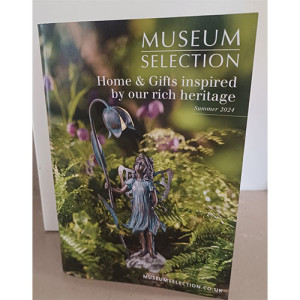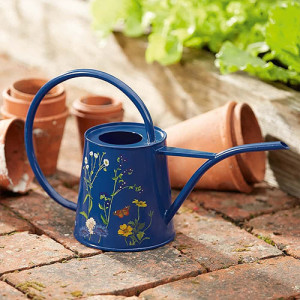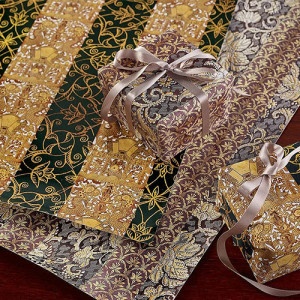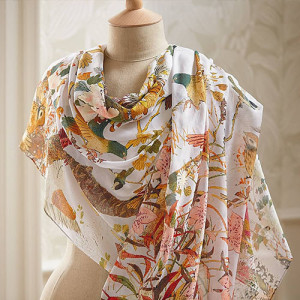Start Licensing’s Ian Downes looks at how much progress heritage focused brands have made in licensing in recent years.
The recently announced nominations for the Brand & Lifestyle Licensing Awards (The B&LLAS) confirmed how much progress heritage focused brands have made in licensing in recent years.
Museums, galleries and heritage organisations featured large in the nominations in the product categories. Featured brands included The Ashmolean Museum, The Van Gogh Museum, Royal Horticultural Society and the Victoria & Albert Museum. These brands and others are now very much part of the mix. A measure of this is the spread of product categories that the brands feature in and the breadth of licensees using these kind of brands. Interestingly, it is no longer uncommon to see licensees traditionally associated with entertainment licensing now embracing heritage licensing.
One of the challenges that the sector has faced over the years has been retail engagement. Trailblazers like the Natural History Museum and the V&A have helped shine a light on the category at retail, while retail buyers have grown more confident in engaging with the sector. The apparel category is a great example of this with heritage-led ranges frequently featuring in retailers such as Primark, Berksha and supermarkets.
However companies like Museum Selection have traded in the category for years and recognised that it is an area of commerce that offers good opportunities. Museum Selection is an online and catalogue retailer and it has recently launched its summer 2024 catalogue, described as featuring ‘Home & Gifts inspired by our rich heritage’.
 The catalogue is mailed out to existing customers and new ones who request a copy. It is packed full of product, runs to 84 pages, is well presented with lifestyle photography and is divided into themes such as Edwardian Garden and Spring Home. It is a well curated selection that mixes licensed products, generic products ‘on theme’ that it has sourced, and also some own brand developments that Museum Selection has seemingly developed with its own suppliers.
The catalogue is mailed out to existing customers and new ones who request a copy. It is packed full of product, runs to 84 pages, is well presented with lifestyle photography and is divided into themes such as Edwardian Garden and Spring Home. It is a well curated selection that mixes licensed products, generic products ‘on theme’ that it has sourced, and also some own brand developments that Museum Selection has seemingly developed with its own suppliers.
The catalogue provides a good snapshot of some of the current licensing activity in the sector and how heritage brands can be used in an authentic way. Museum Selection has great insight into its customers, their buying habits and product in particular. Like other direct selling companies it uses this accumulated knowledge to inform the buying decisions. As a general observation it is able to drill down into collections in a more focused way than other retailers can sometimes do allowing it to offer more specialist products, but products that have been developed with expert knowledge of the source material used.
A good example of this is an Ashmolean Museum product – a pair of Worcester Gilt Stripes Tin plates. These are based on a design featured in the Museum’s Worcester Porcelain collection. Museum Selection includes notes on the origins of design and product in its catalogue setting them in a heritage context. The catalogue is designed to be explored and I imagine consumers go back to it several times. As well as the well written product descriptions, it also includes quotes from literary and historical figures which add further personality to the catalogue selection.
 Gardens and gardening are a strong theme in the catalogue, reinforcing the increasing opportunities that exist in this sector for licensing. Unsurprisingly a leading light in the category is the Royal Horticultural Society and it features in the catalogue a number of times including a Meadow Flower decorated watering can. The featured design was sourced from the RHS’ Lindley Library which houses a collection of botanical prints that are used in licensing.
Gardens and gardening are a strong theme in the catalogue, reinforcing the increasing opportunities that exist in this sector for licensing. Unsurprisingly a leading light in the category is the Royal Horticultural Society and it features in the catalogue a number of times including a Meadow Flower decorated watering can. The featured design was sourced from the RHS’ Lindley Library which houses a collection of botanical prints that are used in licensing.
Another feature of the catalogue is how it pulls together products that share a common design subject such as butterflies and kingfishers. This is done in a coordinated way across products ranging from doormats through to wall art – again this helps consumers with their selections and is helpful for those seeking out gift purchases.
 The catalogue also does a good job of featuring products from museums and galleries that aren’t in the main vanguard of licensing yet. For example, it is selling gift wrap developed in association with the Royal Armouries. The design used was inspired by details on artefacts in the Royal Armouries Collection such as decorative brocades. This is very revealing in regards to the potential that heritage collections have to inspire product design and also the fact that design in the sector has matured – it is no longer a case of just reproducing artwork on product as there is much more creative thought given to design these days.
The catalogue also does a good job of featuring products from museums and galleries that aren’t in the main vanguard of licensing yet. For example, it is selling gift wrap developed in association with the Royal Armouries. The design used was inspired by details on artefacts in the Royal Armouries Collection such as decorative brocades. This is very revealing in regards to the potential that heritage collections have to inspire product design and also the fact that design in the sector has matured – it is no longer a case of just reproducing artwork on product as there is much more creative thought given to design these days.
Other featured artists and designs include Claude Monet, Vincent Van Gogh and William Morris; here Museum Selection takes a blended approach to product selection. Products featured include apparel, accessories, stationery and wall art. This underpins how adaptable heritage artwork can be.
 Apparel seems to be a growing category for Museum Selection encompassing dresses, hats, scarves and socks. For example it stocks a Tree of Life scarf based on a design sourced from The Ashmolean Museum – the source material being a 19th Century Japanese embroidered panel. Again this talks to the fact that heritage collections can be the jumping off point for some very original design developments but developments always anchored with an authentic approach to product development.
Apparel seems to be a growing category for Museum Selection encompassing dresses, hats, scarves and socks. For example it stocks a Tree of Life scarf based on a design sourced from The Ashmolean Museum – the source material being a 19th Century Japanese embroidered panel. Again this talks to the fact that heritage collections can be the jumping off point for some very original design developments but developments always anchored with an authentic approach to product development.
The catalogue does dip into character driven licensing with products featuring the likes of Peter Rabbit but, of course, these are characters with a rich and long heritage. The catalogue also supports categories like greetings cards which are products that fit well within the heritage sector. Here again, product development has become more sophisticated with more thought given to matching images to sending occasions.
Museum Selection also incorporates subjects such as trains and cars into the catalogue, acknowledging their traditional strength as themes for gift products. Of course there is a heritage angle to the selections in these categories. It also sells a lot of books but again ones linked to heritage including the Murder in the Museum series from Jim Eldridge which are based on murder mysteries set against the backdrop of famous museums and galleries.
Museum Selection is a really good example of how a specialist retailer is working in a focused way and insightfully tapping into a growing sector of licensing. As the B&LLAs nominations show, heritage licensing is a significant part of the licensing mix these days and is likely to keep growing, not least as heritage organisations seek new ways to raise funds and also to engage with the public. Licensing serves them well on both counts. For licensees it seems they now feel more confident in engaging with the sector and have recognised that it is a sector that can inspire their product development.
Ian Downes runs Start Licensing, an independent brand licensing agency. His X handle is @startlicensing – he would welcome your suggestions for what to look out for.
































